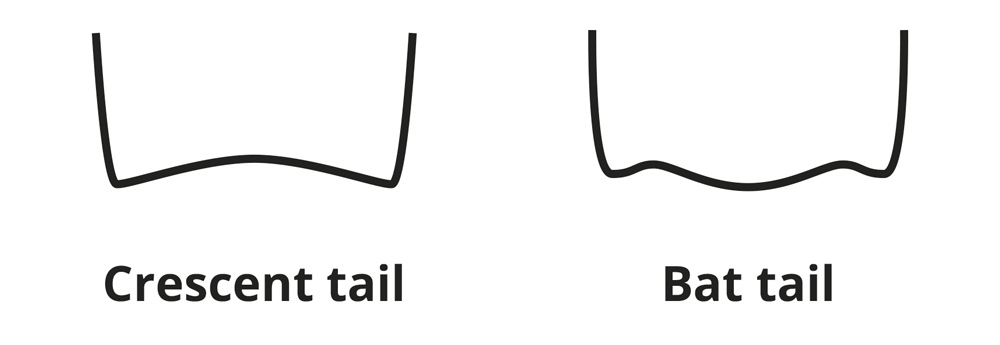Buying a bodyboard

When you're set to acquire your bodyboard, various factors require your attention. Here's an organised and simplified guide detailing the core aspects to explore.
1. Selecting the Core
The core essentially comprises the fundamental material constituting the heart of your board. It's fabricated from a foam substance available in three variants: ESP, PE, and PP. Each variant is characterised by distinct attributes regarding water temperature, wave magnitude, rider's size and proficiency, etc. Below, a brief comparison of these three kinds is provided.
ESP - Expanded Polystyrene
- Permits multiple shapes, designs, and unique flex patterns
- Optimal cushioning for elbows and hips
- More economical compared to PE and PP
- Ideal for beginners
- High buoyancy and lightweight
- Less robust than PE and PP, so opt for approximately 50-55 mm thickness for additional strength
PE - Polyethylene
- The original and most prevalent bodyboard core
- Flexibility with almost immediate feedback to the rider
- Enables superior control
- Performs better in cooler water
- Suitable for larger waves
PP - Polypropylene
- Outstanding comprehensive board
- More rigid than PE but lightweight and sturdier
- Completely watertight
- Effective in warm waters and situations
- Perfect for sizeable waves and more intricate manoeuvres
- Beaded PP contributes flex and buoyancy
- Extruded PP adds firmness and speed
Referencing flex indicates how much the board bends when external pressure (like waves) applies, and accordingly springs back. A board with greater flex is more reactive to water conditions. Conversely, with reduced flex, it's deemed stiffer but swifter.
2. Selecting the Slicks (Skins)
Slicks or skins form the materials enveloping the below section of the board, the part in direct contact with water. Two types of slicks exist: Surlyn Slicks and HDPE Slicks:
- HDPE slicks signify high-density polyethylene slicks; a durable material with diminished resistance, thus enhancing speed. Typically more affordable than Surlyn, it's predominantly used in beginner boards.
- Surlyn slicks offer a rubber-like surface ensuring optimal responsiveness and flexibility, reverting to its original form after pressure is exerted. Bodyboarders favour this due to its superior performance despite being pricier than HDPE.
3. Selecting the Deck
The deck is the board's upper segment, where surfers position themselves while catching waves. Three choices are available: PE, XPE, and IXPE. Below is a table comparing the three:
PE - Polyethylene
- Exceptional padding for the rider
- Dents form more readily as it doesn't revert to original form
- Soft and flexible
XPE - Cross-linked, closed cell
- Water-resistance is excellent due to its closed structure
- Sleek look, but requires additional wax for grip
- Sturdier feel compared to PE and IXPE
IXPE - Cross-linked, open cell
- Less impact on the board's flex and recoil
- Extra rigid and substantial strength due to higher density
- Softer than XPE, providing a more textured feel for superior grip
Your choice of deck often relies on personal taste and riding style—whether you favour a softer feel, a sleeker appearance, or longevity without crease formation, is entirely your decision.
4. Selecting the Tail Shape
The primary tail shapes for bodyboards are twofold, each having multiple variations. Both types are apt for all levels and largely depend on your preferences and your riding conditions.

- Crescent tail is suited to a range of conditions, offering a reliable grip on the wave and easier rider hip positioning on the board for catching waves or paddling out;
- Bat tail is more advantageous in weaker or unpredictable surf conditions due to its augmented flotation. It's ideal for heavier riders, facilitates quicker speeds owing to increased flotation, though potentially offering a looser feel at the board's rear.
5. Selecting the Size
Choosing the correct board size is essential for bodyboards. Besides your height, size selection also depends on the type of waves you'll surf. Larger waves require the control and agility of a smaller board, whereas the flotation of a bigger board is advantageous in weaker conditions.
Nonetheless, it's imperative to ensure the board fits your height and weight! A board that's excessively long may cause your knees to hit the tail while paddling with fins. Conversely, a board too small won't afford enough flotation. To adjust buoyancy without altering board length, consider choosing a wider or narrower board.
To determine the appropriate board size, measure:
- The distance from the ground to your navel;
- The distance from your chin to your knees;
These measurements may vary but should be closely matched to provide a reliable indication of a suitable board length.
6. Finally - the Fins/Flippers
In bodyboarding, fins or flippers are not mere additions but essentials. Specially designed for bodyboarding, these fins differ from regular swimming versions. Typically shorter, broader, and more rigid, they enable rapid acceleration to catch waves and manoeuvre without obstruction from flippers.
Numerous variations exist, encompassing different materials and shapes, but what's most crucial is acquiring specific bodyboarding fins that are comfortable and fitting.
Go Forth and Bodyboard!
With an understanding of what aspects to evaluate before choosing your board, you can now find the ideal one for you. Feel free to consult contact us if further questions or information is required.
